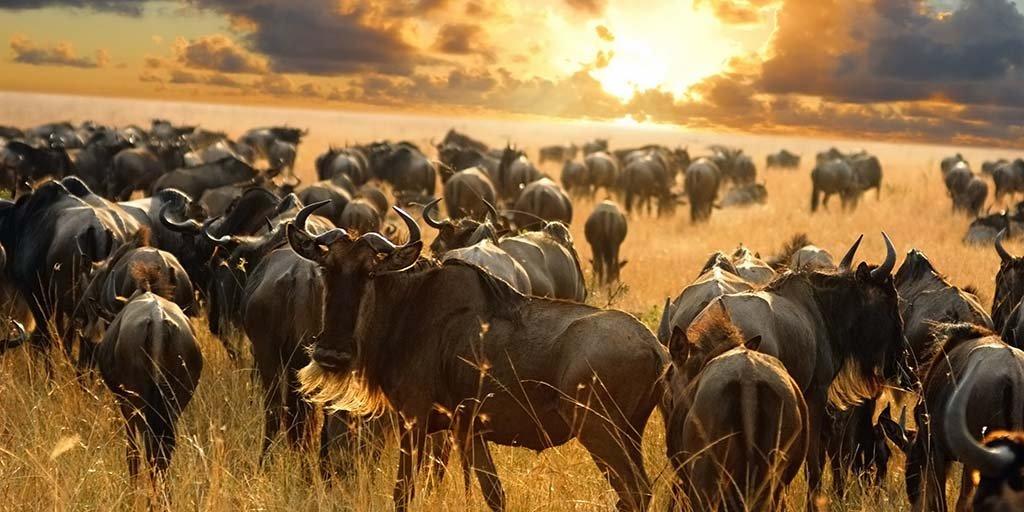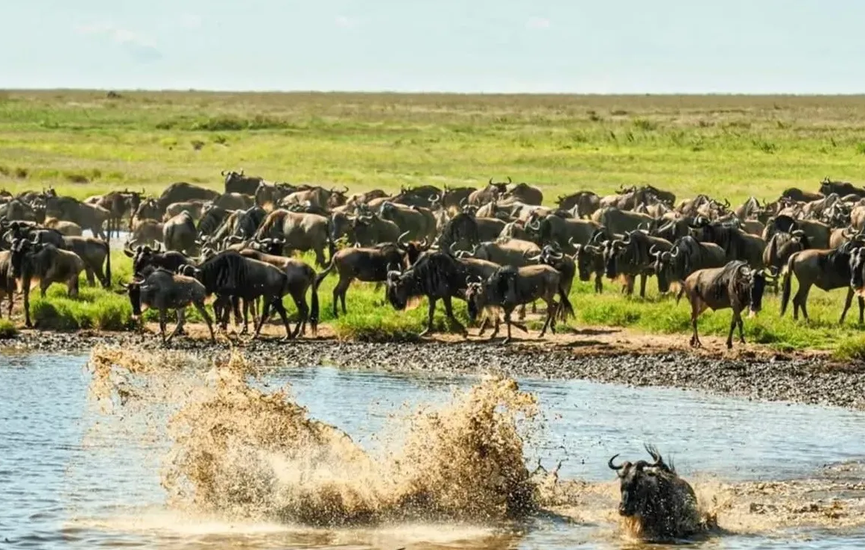A Life-Or-Death Journey
The most iconic phase of the migration is the dramatic crossing of the Mara River between July and September. Here, wildebeest plunge into crocodile-infested waters, while lions and other carnivores lie in wait at the banks. It is a brutal test of instinct and endurance, where only the strongest survive.
“Watching thousands of animals take the leap into the Mara River is a moment that leaves even the most seasoned wildlife experts in awe,” says Dr. John Mwakilasa, a Tanzanian wildlife biologist. “It’s both beautiful and brutal.”
Economic and Ecological Significance
The Great Migration isn’t just a natural wonder—it’s a vital pillar of the East African tourism industry. Safaris centered on the migration attract over 300,000 international tourists annually, contributing millions of dollars to the economies of both Tanzania and Kenya.
Ecologically, the migration plays a crucial role in shaping the savannah. Grazing patterns influence plant growth and nutrient cycling, supporting biodiversity across the Serengeti-Mara ecosystem.


Conservation Challenges
Despite its grandeur, the migration faces threats. Climate change, human-wildlife conflict, fencing, and habitat fragmentation pose serious risks to this fragile natural phenomenon. Conservationists warn that without coordinated transboundary efforts, future generations might witness a diminished version of this epic journey.
“The Great Migration depends on open landscapes and free movement,” notes Kenyan conservationist Miriam Njoroge. “We must protect these corridors before they vanish.”
Global Symbol of Survival
As the herds continue their journey across the African wilderness, the Great Migration stands as a poignant reminder of the delicate balance between nature and human development. It is a spectacle of survival, resilience, and the untamed spirit of the wild—one that continues to inspire scientists, travelers, and conservationists alike.
